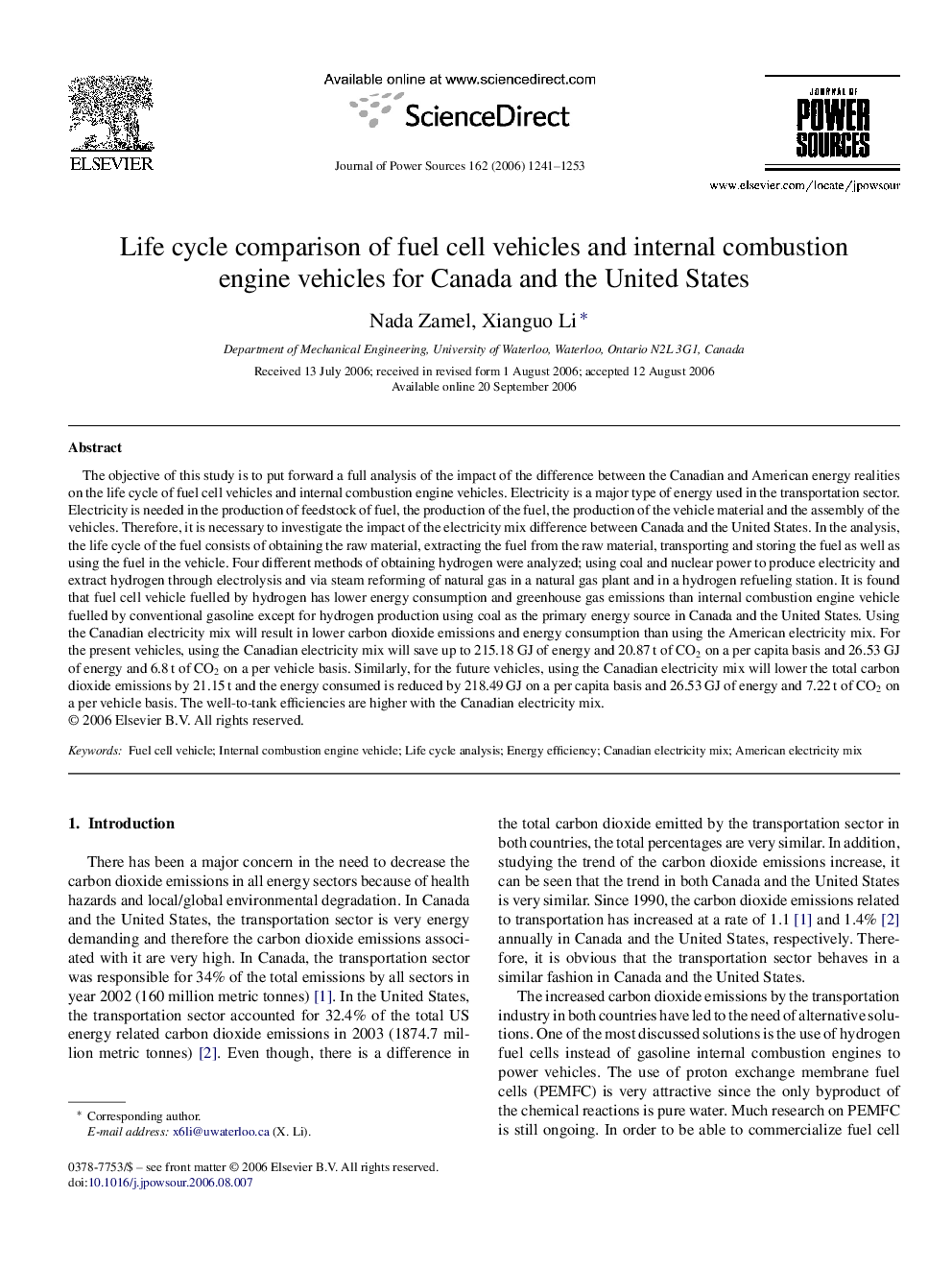| کد مقاله | کد نشریه | سال انتشار | مقاله انگلیسی | نسخه تمام متن |
|---|---|---|---|---|
| 1292500 | 973389 | 2006 | 13 صفحه PDF | دانلود رایگان |

The objective of this study is to put forward a full analysis of the impact of the difference between the Canadian and American energy realities on the life cycle of fuel cell vehicles and internal combustion engine vehicles. Electricity is a major type of energy used in the transportation sector. Electricity is needed in the production of feedstock of fuel, the production of the fuel, the production of the vehicle material and the assembly of the vehicles. Therefore, it is necessary to investigate the impact of the electricity mix difference between Canada and the United States. In the analysis, the life cycle of the fuel consists of obtaining the raw material, extracting the fuel from the raw material, transporting and storing the fuel as well as using the fuel in the vehicle. Four different methods of obtaining hydrogen were analyzed; using coal and nuclear power to produce electricity and extract hydrogen through electrolysis and via steam reforming of natural gas in a natural gas plant and in a hydrogen refueling station. It is found that fuel cell vehicle fuelled by hydrogen has lower energy consumption and greenhouse gas emissions than internal combustion engine vehicle fuelled by conventional gasoline except for hydrogen production using coal as the primary energy source in Canada and the United States. Using the Canadian electricity mix will result in lower carbon dioxide emissions and energy consumption than using the American electricity mix. For the present vehicles, using the Canadian electricity mix will save up to 215.18 GJ of energy and 20.87 t of CO2 on a per capita basis and 26.53 GJ of energy and 6.8 t of CO2 on a per vehicle basis. Similarly, for the future vehicles, using the Canadian electricity mix will lower the total carbon dioxide emissions by 21.15 t and the energy consumed is reduced by 218.49 GJ on a per capita basis and 26.53 GJ of energy and 7.22 t of CO2 on a per vehicle basis. The well-to-tank efficiencies are higher with the Canadian electricity mix.
Journal: Journal of Power Sources - Volume 162, Issue 2, 22 November 2006, Pages 1241–1253